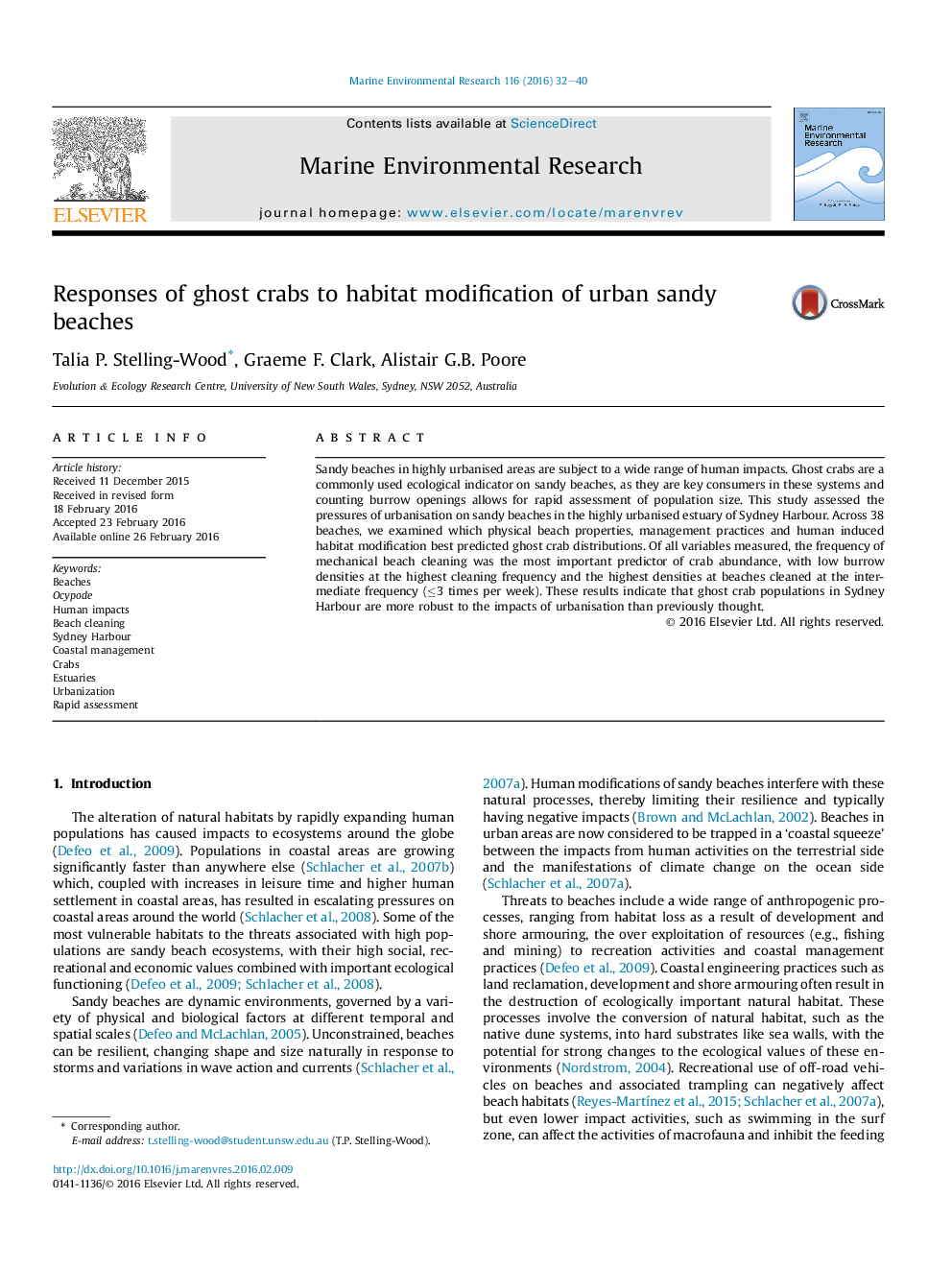| Article ID | Journal | Published Year | Pages | File Type |
|---|---|---|---|---|
| 4550601 | Marine Environmental Research | 2016 | 9 Pages |
•Ghost crab densities were used to assess human impacts on urban sandy beaches.•Mechanical beach cleaning frequency was the strongest predictor of burrow density.•Highest burrow counts were found on infrequently (≤3 per week) cleaned beaches.•Ghost crabs in Sydney Harbour are resilient to moderate human disturbance.
Sandy beaches in highly urbanised areas are subject to a wide range of human impacts. Ghost crabs are a commonly used ecological indicator on sandy beaches, as they are key consumers in these systems and counting burrow openings allows for rapid assessment of population size. This study assessed the pressures of urbanisation on sandy beaches in the highly urbanised estuary of Sydney Harbour. Across 38 beaches, we examined which physical beach properties, management practices and human induced habitat modification best predicted ghost crab distributions. Of all variables measured, the frequency of mechanical beach cleaning was the most important predictor of crab abundance, with low burrow densities at the highest cleaning frequency and the highest densities at beaches cleaned at the intermediate frequency (≤3 times per week). These results indicate that ghost crab populations in Sydney Harbour are more robust to the impacts of urbanisation than previously thought.
